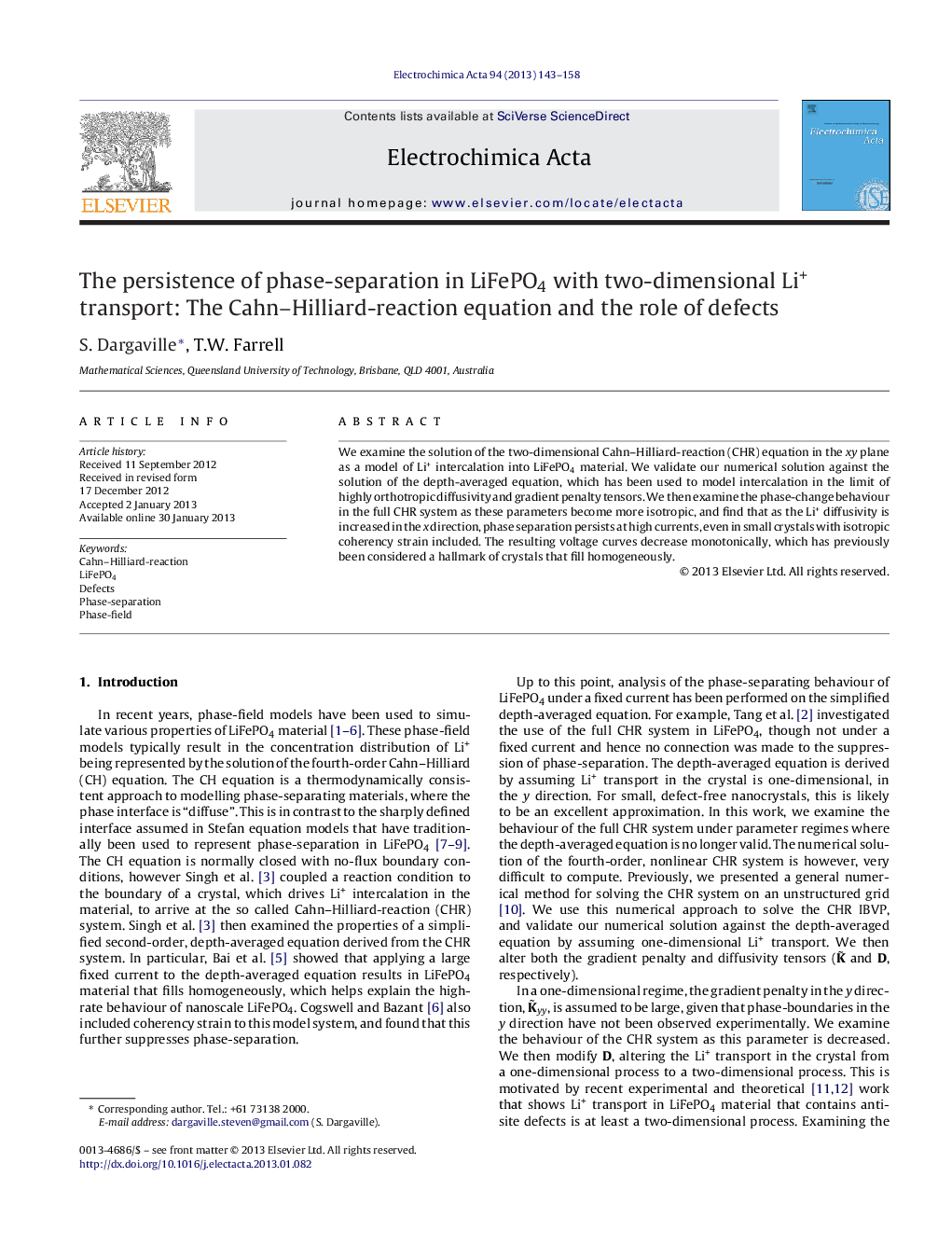| Article ID | Journal | Published Year | Pages | File Type |
|---|---|---|---|---|
| 187040 | Electrochimica Acta | 2013 | 16 Pages |
We examine the solution of the two-dimensional Cahn–Hilliard-reaction (CHR) equation in the xy plane as a model of Li+ intercalation into LiFePO4 material. We validate our numerical solution against the solution of the depth-averaged equation, which has been used to model intercalation in the limit of highly orthotropic diffusivity and gradient penalty tensors. We then examine the phase-change behaviour in the full CHR system as these parameters become more isotropic, and find that as the Li+ diffusivity is increased in the x direction, phase separation persists at high currents, even in small crystals with isotropic coherency strain included. The resulting voltage curves decrease monotonically, which has previously been considered a hallmark of crystals that fill homogeneously.
